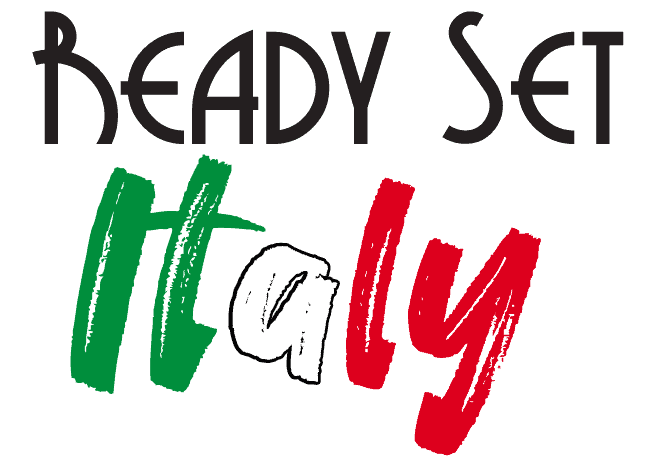Are you traveling to Ravenna on your trip to Italy and looking for what to see and do?
Well, stick around because today we will tell you all you need to know to visit this incredible Italian City!
What is Ravenna Famous for?
Ravenna was the capital city of the Western Roman Empire in the 5th century, from 408 AD when the emperor Honorius transferred the capital from Rome. The transfer happened because this city was easier to defend from the barbarian invasions than Rome due to the marshes that surrounded it.
After the fall of the Western Roman Empire, Zeno, the Emperor of the Eastern Roman Empire, sent Theodoric the Great, King of the Ostrogoth, to reconquer Italy. After Theodoric succeeded, Ravenna became the capital again, enriching the city with some amazing churches.
These historical reasons made Ravenna world famous for its Byzantine churches, magnificently decorated with beautiful mosaics. In fact, Ravenna is also known as the city of mosaics.
Is Ravenna Worth Visiting?
If you’re considering a trip to Ravenna and wonder if it’s worth visiting – YES! Rick and I suggest visiting the city if you’re on a tour of Northern Italy.
Located in the Emilia-Romagna region of Italy, this city is known for its stunning Byzantine mosaics that adorn its numerous UNESCO World Heritage sites.
The Basilica of San Vitale, in particular, showcases some of the most extraordinary examples of Byzantine art. The Mausoleum of Galla Placidia is another must-see attraction, featuring intricate mosaics that depict biblical scenes. Numerous examples of early Christian monuments are scattered along the historical city center.
Ravenna also boasts a fascinating history that dates back to ancient times. It served as the capital of the Western Roman Empire from 402 to 476 AD. The city’s historical significance is evident in its well-preserved architectural marvels, including the 5th-century Baptistery of Neon and the Arian Baptistry.
Lastly, Ravenna’s charming streets and inviting local cuisine add to its allure. Whether you are an art enthusiast or a history buff, Ravenna is a destination that should not be missed.
Where is Ravenna, Italy, on the Map, and How to Get there?
The map of Italy below shows that Ravenna is located in the Emilia-Romagna region on the Adriatic coast. It is located 72 km east of Bologna. 144 km south of Venice and 351 km northeast of Rome.

The best way to get to Ravenna is by train from Bologna, and the trip takes a little over one hour. So if you come from Rome, Florence or Venice, remember you’ll have to change trains in Bologna.
Ravenna also has a commercial port, and some cruise lines visit there by way of the Candiano Canal.
How to Move Around the City
When you visit Ravenna, you’ll find it’s a very walkable city. Most of the attractions in the city are a few steps away from each other.
You can visit the whole city in one day, but if you want to experience everything that Ravenna, Italy, offers, you might want to consider spending the night in this great ancient city.
What to Visit in Ravenna?
As we mentioned, Ravenna has some of the world’s most magnificent examples of Byzantine churches, some as old as the sixth century AD. Additionally, there are lots of mosaics in Ravenna, beach clubs, mosaic monuments, a convent church filled with early Christian monuments, and historic sites.
Let’s explore this fascinating city, Ravenna, together:
Piazza del Popolo
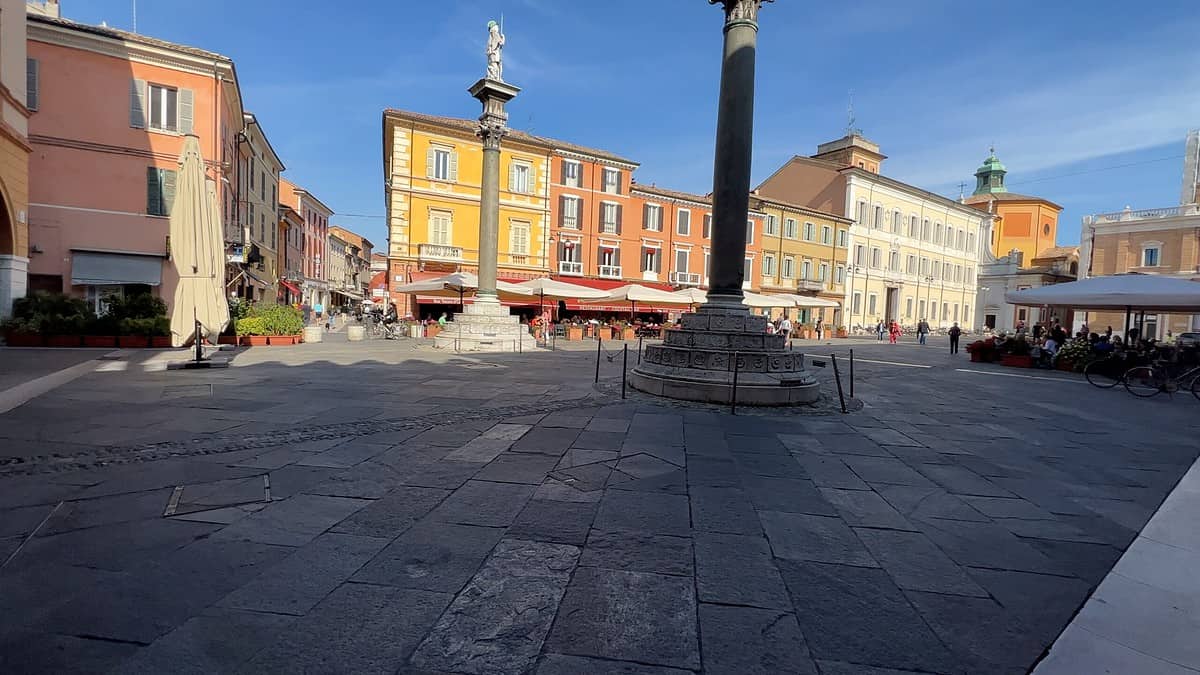
We start our tour of Ravenna from Piazza del Popolo, which is the center of Ravenna. This popular place has been here for more than 700 years.
When standing there, you can spot other important buildings immediately, like the town hall and the prefecture building where important people worked. People usually come to Piazza del Popolo to meet up and hang out with each other.
No matter what time of the day, Piazza del Popolo’s square is always a busy place. It has many open-air cafes, where many streets come together, making it a popular place to pass through the square regularly.
Important buildings surround Piazza del Popolo. When you travel and explore from the train station, one of the first buildings you will see is an Italian Bank called “Banca Nazionale del Lavoro.”
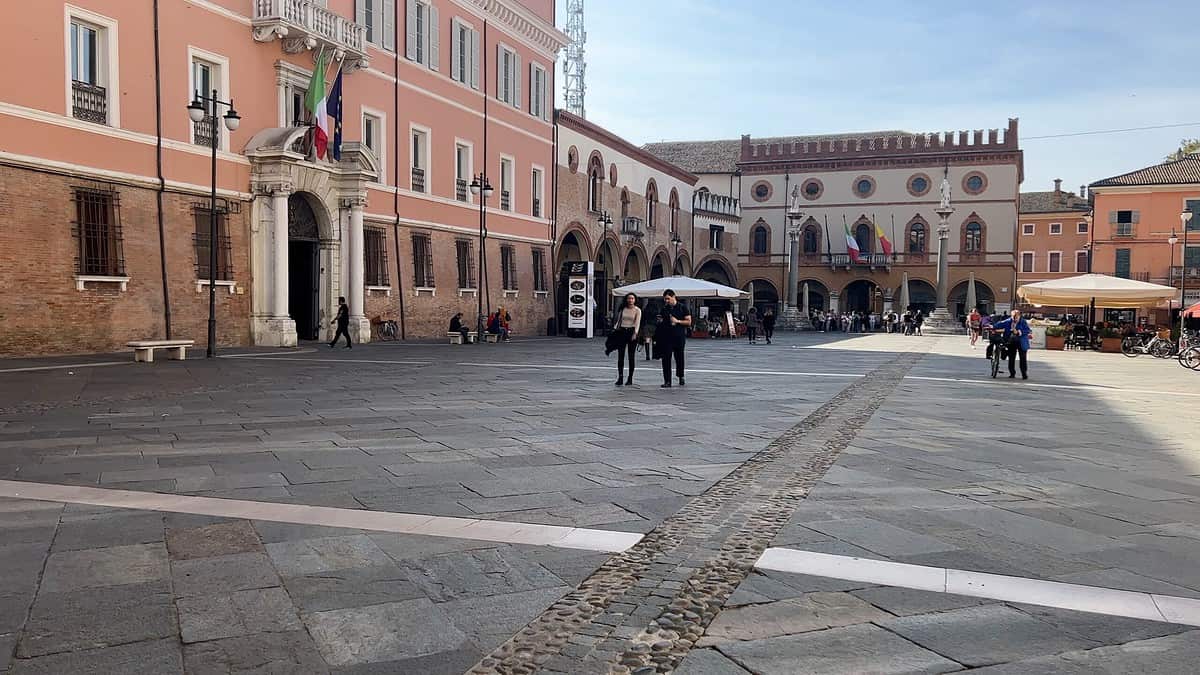
Nanni di Baccio Bigio built Piazza del Popolo. The Prefecture building is connected to it with a big archway. If you stand in the middle of the Vaults of Popolo, you can immediately see Dante’s Tomb.
Basilica of San Vitale
Ravenna, Italy, is famous for its mosaics. Many tourists say that they are some of the best in the world. From the Piazza del Popolo, you can walk about ten minutes through the beautiful streets of Ravenna, and you will arrive at the Church of San Vitale. The Eastern Roman Emperor Justinian commissioned the church in the 6th century AD.

It doesn’t look very impressive from the outside, but this is one of the most important religious sites in Ravenna. Indeed, your jaw will drop at how majestic it looks when you go inside. There is something special in it. The interior is decorated with some of the most magnificent mosaics in Italy. The walls are covered with beautiful pictures made from small tiles called mosaics.
It is more impressive that its walls were made by experts long ago and are considered some of the world’s best examples of Byzantine art. It is remarkable to think that you are walking on centuries-old intricate mosaics.
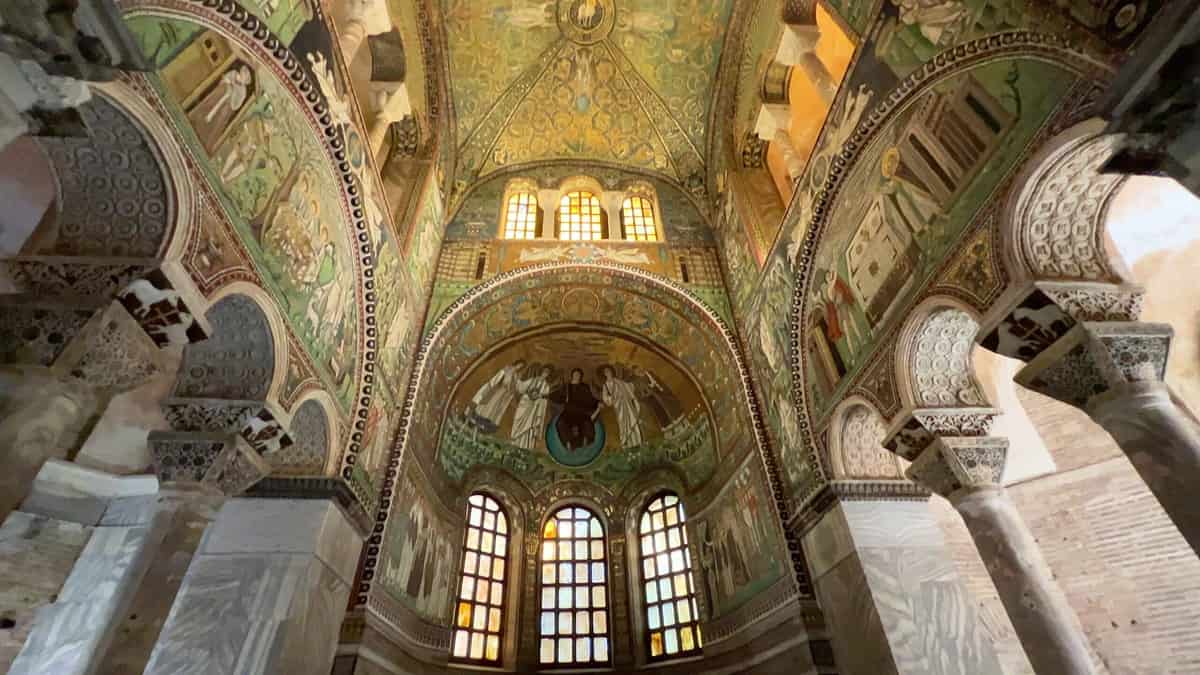
The Basilica is also a UNESCO World Heritage Site and has tons of beautiful artwork that has been around for 1,500 years. It still looks impressive with lots of gold and bright colors.
Galla Placidia Mausoleum
Next to the Basilica di San Vitale, you can find the Galla Placidia Mausoleum. This is a very small building but very important. Again, the structure looks bare from the outside, but you will be stunned by the fantastic mosaics once inside.
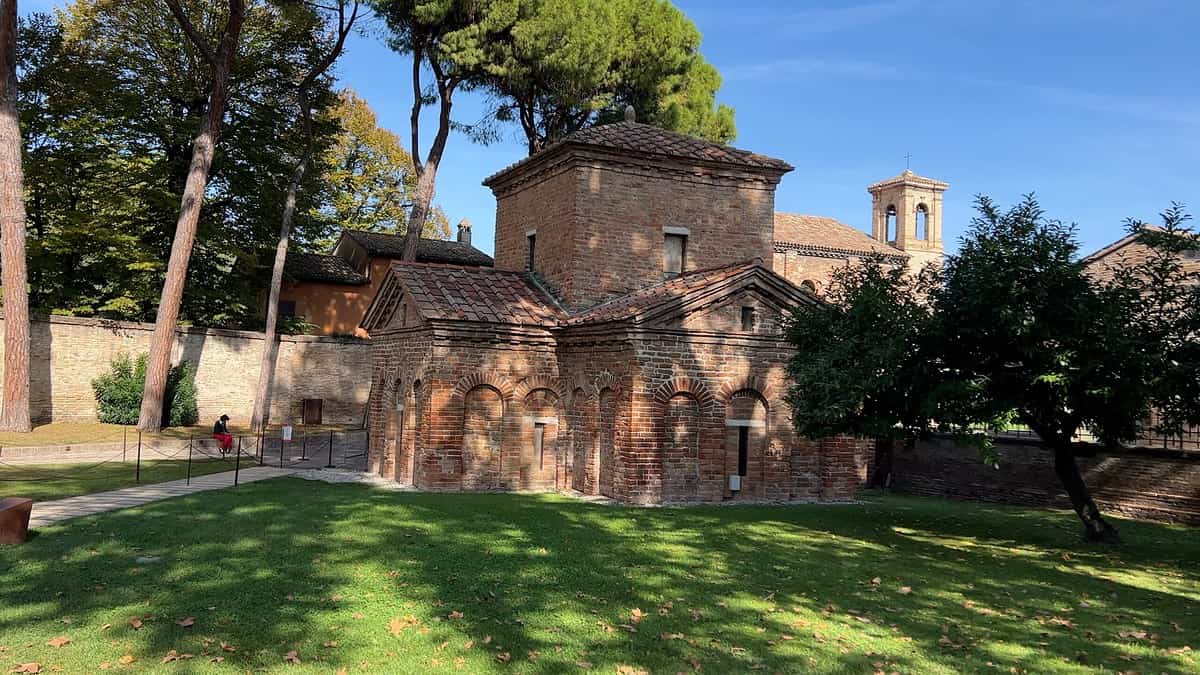
It’s remarkable to think this building has been perfectly preserved for over 15 hundred years. It was dedicated to Galla Placidia, the daughter of Emperor Theodosius the First, who lived in. the 4th century AD.
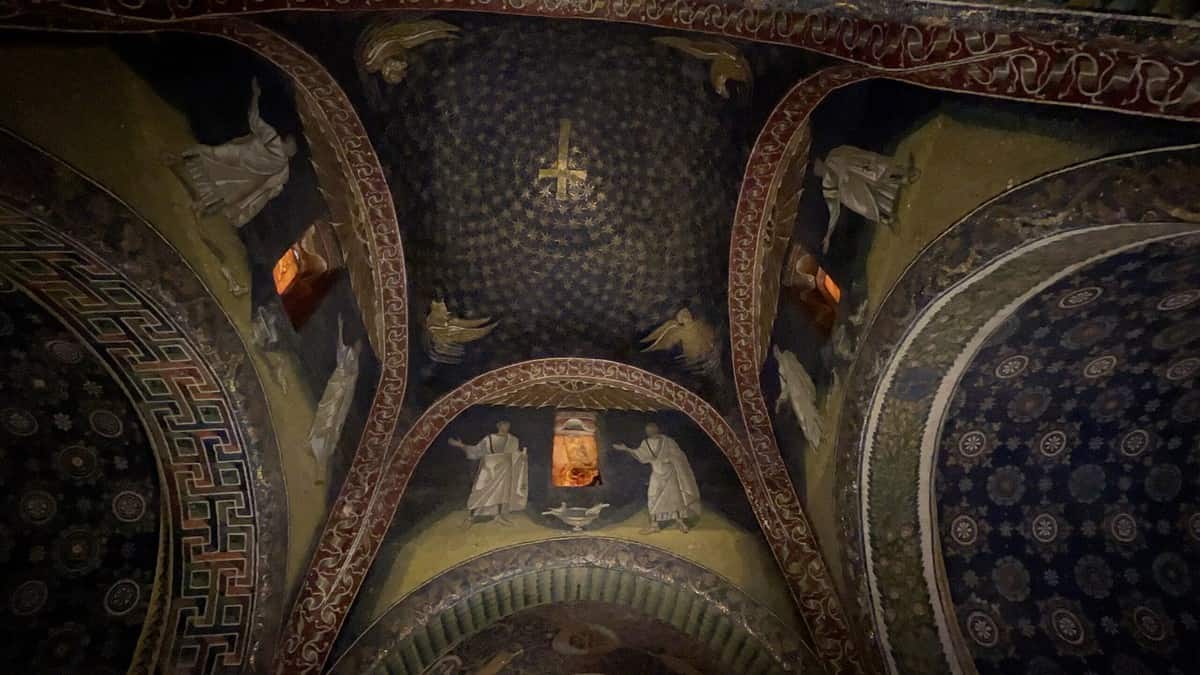
The Mausoleum of Galla Placidia, a UNESCO World Heritage Site, is famous for its old Christian mosaics. The place was built in the fifth century.
Basilica di Sant’Apollinare Nuovo
The Sant Apollinare Nuovo Basilica is about a 15-minute walk from San Vitale. The church was commissioned by King Theodoric, the Ostrogoth, in the 6th century, representing an incredible example of Roman-Barbarian architecture.
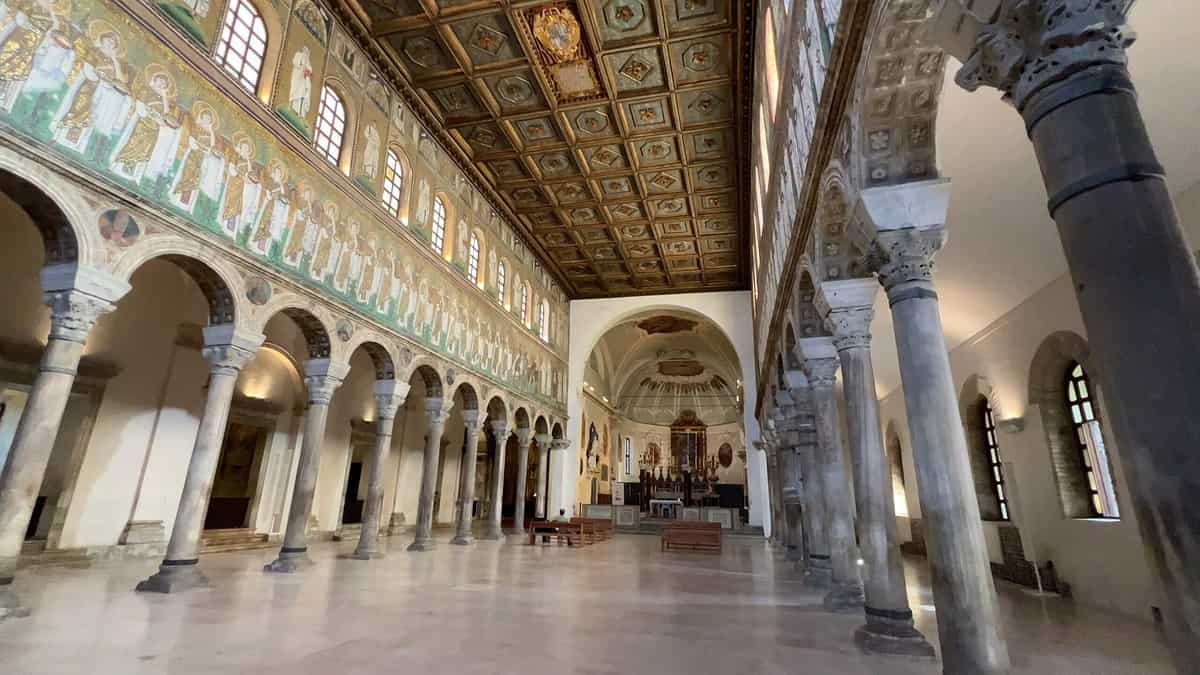
Inside you will be able to admire more stunning mosaics with an incredible amount of details. A few steps away from the basilica, you can admire the remains of the palace of King Theodoric.
Neonian Baptistery and Archiepiscopal Chapel
Just a few minutes from Sant’Appollinare, you can explore two more special places listed as UNESCO World Heritage Sites. They are the Neonian Baptistery and the Archiepiscopal Chapel. They both have impressive mosaics on their walls.
These religious places are very important parts of Ravenna as they show us how people worshipped in early Christianity. Both of these places are near the Ravenna Cathedral.
The Neonian Baptistery is a small building next to the Duomo of Ravenna and the Bishop’s palace. Locals also know it as the Baptistry of the Orthodox. It was built in the fifth century and beautifully decorated by Bishop Neone with majestic mosaics.
In the dome of the Baptistery, you can admire the mosaic of St. John the Baptist, who baptizes Jesus, surrounded by the 12 Apostles. This incredible monument is a UNESCO world heritage site.
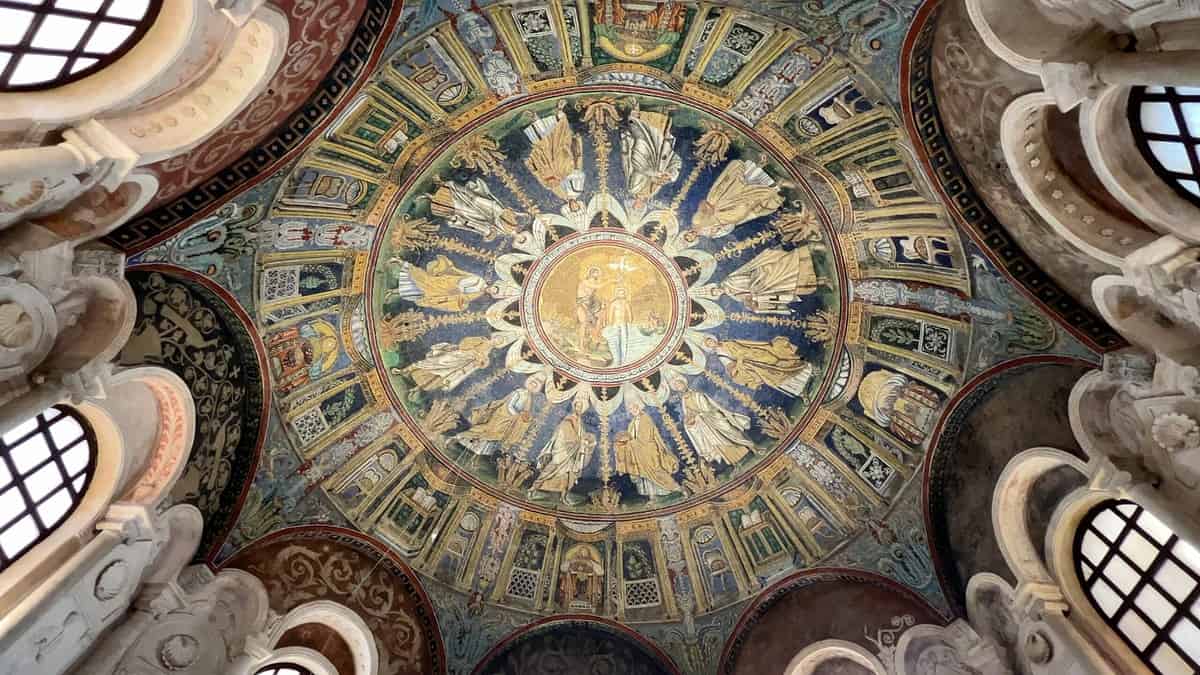
You will find the Archbishop’s Chapel on the second floor of the Bishop’s palace. You’ll enjoy seeing the mosaics that date back to the 5th century AD. The first time I saw the mosaics, I didn’t think much of it – not until I got up close. They are all ever so tiny!
You can visit and admire all the beautiful churches and the Neonian Baptistery by buying one ticket.
However, if you want to enjoy and better understand the latest day of the Roman Empire and its art, we strongly recommend booking a guided tour of Ravenna.
Domus dei Tappeti di Pietra
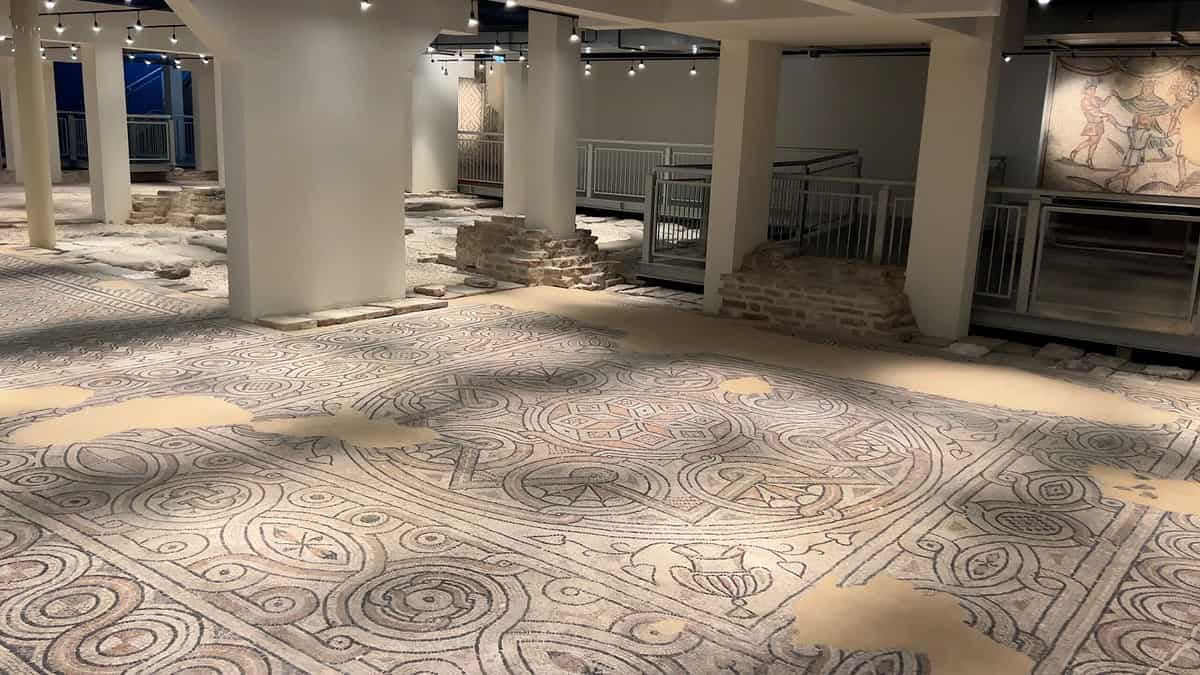
The Domus dei Tappetti di Peitra looks like a small church from the outside. But, in the church’s basement, you will find an incredible archeological site discovered only a few years ago. On the site, you can admire the floors of a Roman villa still perfectly preserved.
We strongly recommend you go and visit this incredible site. You can buy the tickets on-site, and at the time of publishing, the price is €4.00.
Mausoleum of Theodoric the Great
On the city’s northeast side, not too far from the Castle of Brancaleone, you will find the ancient Mausoleum of Theodoric the Great. This is the tomb of Theodoric the Great, King of the Ostrogoth, who died in Ravenna in 526 AD.
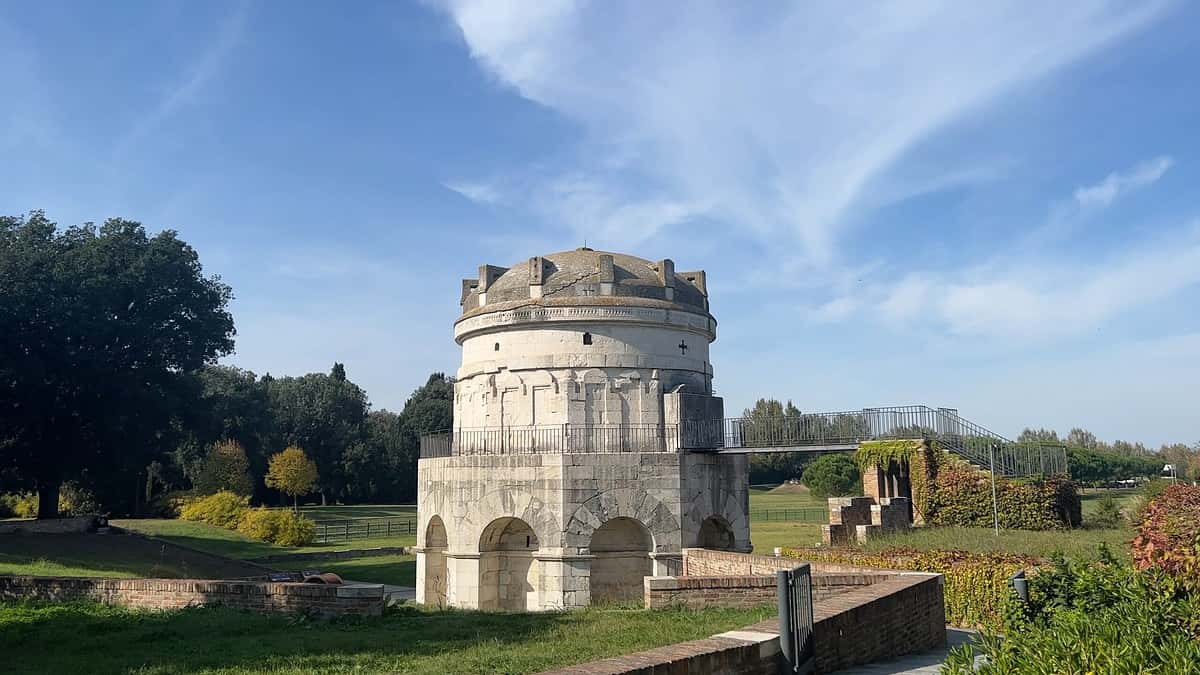
You’ll find this impressive stone structure in the park. And, it is famous because its dome is made from an enormous single piece of solid Istrian stone that weighs more than 230 tons!
This massive stone was quarried more than 400 km from Ravenna and brought into place by land. The Mausoleum is open in the morning, and the ticket costs €4.00, and it can you can buy them on-site.
National Museum
The old San Vitale monastery near the sixth-century basilica has been home to the National Museum of Ravenna since 1885. This rich history museum has many exciting things to see.
A long time ago, in the 1700s, monks from the big city collected particular objects like artwork, antique items, and things from nature. They put them together to make a collection for a museum.
The National Museum has many unique things you can explore. You can find tombstones, statues from long ago, objects connected to places important to the world, and art that people used daily.
This museum is special because the two Renaissance courtyards and the abbatial spaces create a magical atmosphere. It is one of the most important places to see in this majestic city, which shows how beautiful the city was throughout history.
Tomb of Dante Alighieri (Dante’s Tomb)
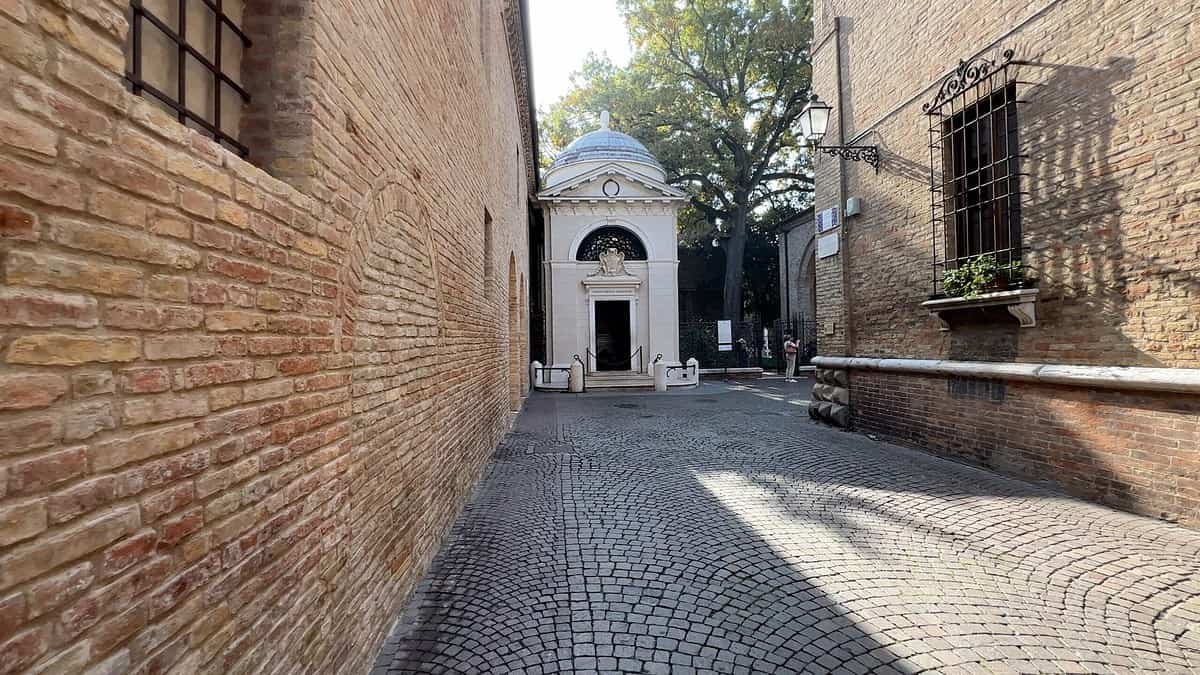
Another famous site in Ravenna is the tomb of the father of the Italian Language, the 14th-century poet Dante Alighieri, who died in Ravenna in 1321. The tomb is located by the church of Saint Francis in Ravenna and is free to visit.
It is a small Chappell built in the Neo-Classic style 1781. The Tomb is next to the Church of San Francesco in the city center.
Arian Baptistery
The Arian Baptistery is another unique place to visit in Ravenna, Italy. It is part of eight important sites in the city that have been part of the UNESCO World Heritage Sites. This site is less famous than the Neonian Baptistery, but it’s still worth visiting. It is located just a few steps away from Sant’ Apollinare Nuovo. Inside the baptistery, you can admire more stunning mosaics perfectly preserved since the 5th century.
Basilica di Sant’Apollinare in Classe
This impressive Basilica di Sant’Apollinare is located about 7 km outside the city center, on the ancient Roman Port of Classe site. Basilica di Sant’Apollinare was built in the year 594 AD by Bishop Ursicinus.

Once more, the Basilica di Sant’Apollinare is not very ornate from the outside, but once inside, it is magnificently decorated with stunning mosaics.
Not far from the Basilica, you can visit the ruins of the ancient Roman port of Classe.
Marina di Ravenna
If you want to spend more time in Ravenna, remember there are several beach towns to explore. Marina di Ravenna is the closest to Ravenna City. It is one of the famous beach towns along the Adriatic coast.
A tall forest surrounds the Marina di Ravenna; we think it’s a great place to visit if you have some extra time. There are many places to enjoy the local seafood dishes – typical of the area. It is also the perfect place to stay near Ravenna because it has plenty of hotels and campgrounds.
Conclusion
We hope this article inspired you to visit the beautiful ancient city of Ravenna. If you have any questions about the things to do in Ravenna, don’t hesitate to reach out!
We love to hear from you and answer your questions.
